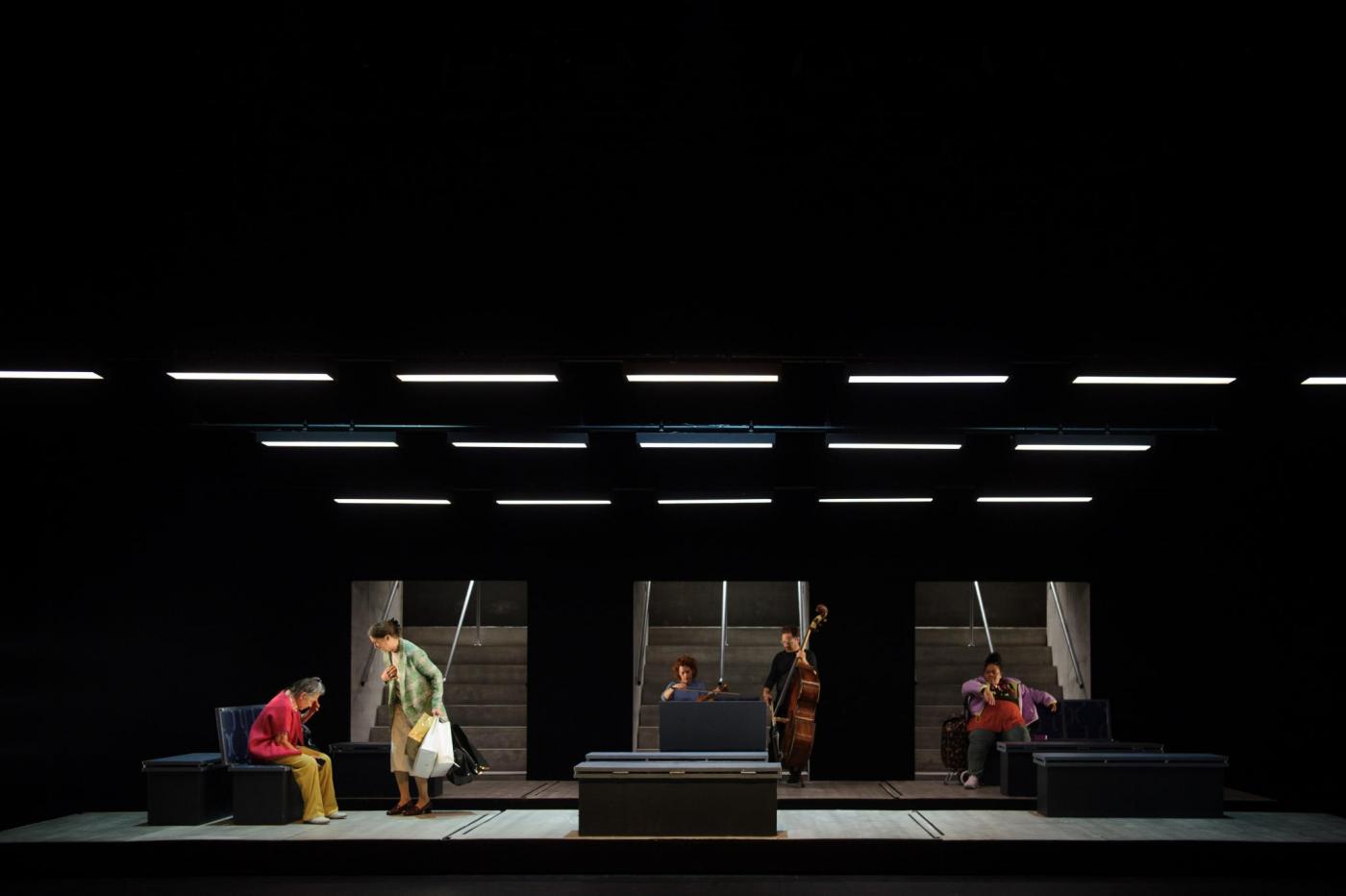Image description: a stage is lit by fluorescent bar lighting, and is ‘split’ into three sections by stage blocking and locations of groups. On the right, one person sits with their head in their hand, while another stands facing them. In the middle, two people play string musical instruments. On the left, a woman sits in one of three waiting area chairs.
By Campbell Williamson
This Wednesday evening, I went and saw Anthem, the spiritual successor to the well-received 1990s play, Who’s Afraid of the Working Class; and here, class remains a relevant theme. But the show also explores the topics of race and gender, presenting a society gripped by free market enterprise in a decidedly less-forgiving way. In short, the play tries to capture the contemporary Australian zeitgeist and determine how strong Australia’s social fabric really is. Do we sing the same song and follow the same rules?
Anthem gives us three separate primary storylines (with some other auxiliary stories thrown into the mix). Storyline one presents several workers who are struggling in a competitive, divisive word and receiving minimal compensation for it. Meanwhile, storylines two and three respectively give us a young ex-couple trying to receive fair wages, and waring against systemic greed, and three women struggling against various class and gender barriers.
The set is dystopian and eye catching. It’s highly reminiscent of a train station or bunker, with concrete dominating the space while smoke lingers in the air. And it moves! Each of the storylines are given a real sense of instability and dynamism with the movement of benches and the evolving beat of Irine Vela’s composition. This theatrically shifts the emphasis of each story. It doesn’t allow the audience to attach themselves to anyone or anything.
In fact, the show constantly denies the audience any chance to attach to its characters. Many of them are not particularly likeable people. They can be racist, bigoted or “whiney”, and often it is left up to the audience to interpret why this is so. There is limited backstory provided, and this can make it difficult and tiring for an audience to understand the why from the what. This can be good, but it is difficult.
And frustratingly, this subtlety was frequently undercut by moments that were too explicit for my taste. For example, when the ex-couple from storyline two decide to take a selfie with their gun and then takes another. This moment seemed ingenuine, jarring and unoriginal, and broke my suspension of disbelief. This is not to say these explicit moments will significantly affect your experience when watching the show; they may not. But when I think back on Anthem, I find it difficult to remember past these moments and recapture the morally ambiguous conflict between characters.
Anthem ran at the Heath Ledger Theatre until February 16th.
Three out of five vignettes
Campbell Williamson isn’t bitter about those eggs. Stop asking.
Image courtesy of Sarah Walker.

